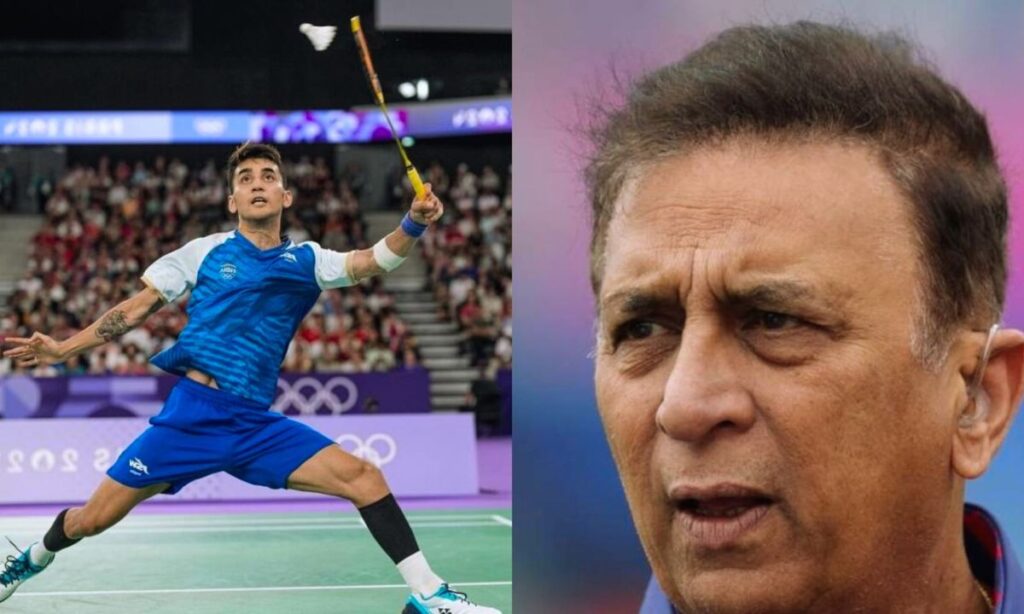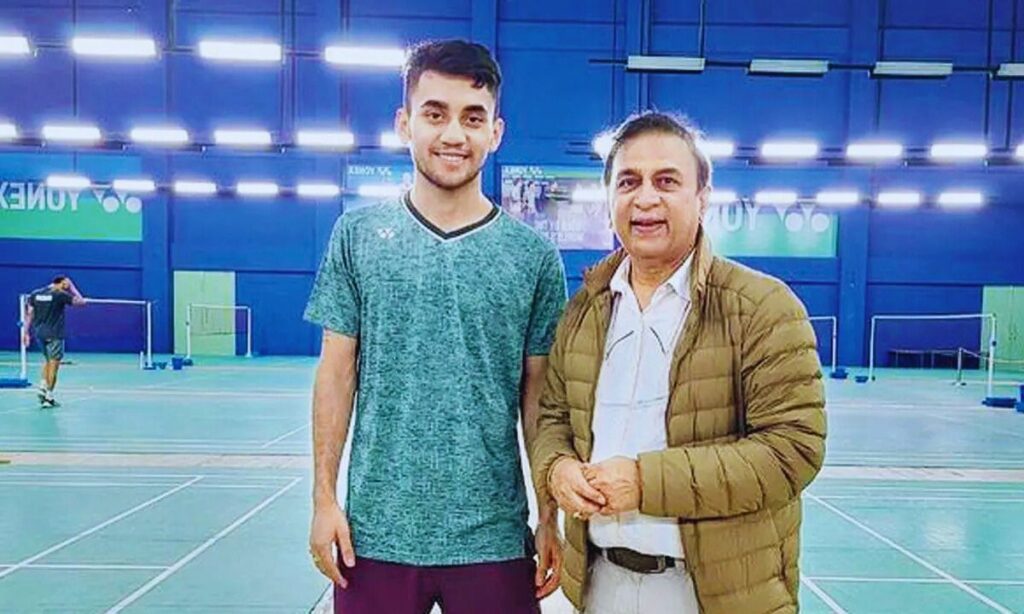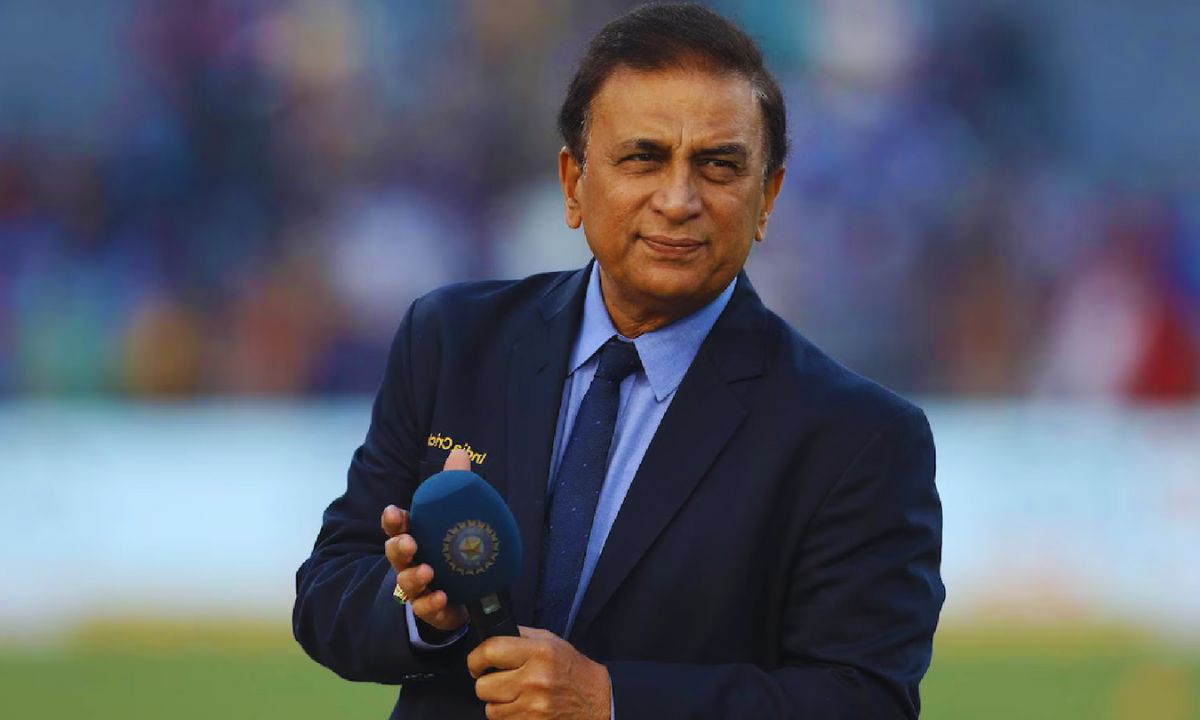Sunil Gavaskar, the legendary master of Test cricket, recently surprised everyone with a revelation: badminton isn’t just a pastime—it’s his favourite sport. He said it loud and clear: when given the choice, he’d rather watch badminton than cricket. That admission carries both a negative edge—surprising for a cricket icon—and a positive resurgence, showing his genuine passion. This powerful statement ignited conversations across India’s sporting circles. It’s not just clickbait—it’s a raw, human confession that adds emotional texture and insight into Gavaskar’s soul.
From Cricket Maestro to Secret Shuttle Fan
Gavaskar built his formidable reputation facing the world’s fastest bowlers without a helmet. Yet today he admits that badminton holds more allure than the game that made him famous. He compares the 2022 Indian Thomas Cup victory to India’s 1983 cricket World Cup win—reflecting a deep reverence for how that moment shook the sporting world. When a cricket icon elevates badminton to that level, it’s an emotional seismic shift.
A Confession That Stings Tradition
For those rooted in cricket lore, a legendary batsman declaring badminton as a priority is jarring. But that’s what makes it refreshingly honest. Gavaskar isn’t parroting a safe narrative—he’s revealing what moves him. That raw sincerity breaks expectations and gives readers a new way to relate to a familiar figure.
Why This Admission Matters for Indian Sports
India’s badminton revolution is real. Seeing legends like Gavaskar support it loudly lends weight. He calls the Thomas Cup triumph comparable to the 1983 cricket miracle—and that’s not just admiration, it’s validation His admiration isn’t fleeting—it’s rooted in witnessing long rallies, lightning reflexes, and strategy in action. Anyone who’s ever stayed breathless through a 100‑shot rally knows exactly what he’s talking about
Emotional Power: Why It Resonates
Gavaskar speaks of heart-stopping reflexes, searing intensity, mind sharpness, and unspoken joy. He describes matches that feel so alive they tingle with excitement. This kind of sensory language is seductive—it pulls readers in and makes them feel the pulse of each rally.
The Champion Who Seeks—Lakshya Sen and the New Generation
Gavaskar sees future stars in players like Lakshya Sen, praising his talent while emphasizing the need for mental resilience That layered insight—admiration with constructive critique—makes him feel like a mentor, not a distant legend. When he says Sen is a champion-in-waiting but needs to strengthen his mind, he adds emotional truth.

The Broader Badminton Legacy—Padukone and Indian Heritage
From Prakash Padukone in the 1980s to today’s stars, Gavaskar has seen badminton evolve. He refers to Padukone as an inspiration and quietly reveals his own long history with the sport: playing at the Bombay Gymkhana, owning a badminton league team, even joining matches over cricket when time allowed That continuity bridges generations and invites to believe in his sincerity.
The Contrast That Captures Attention
The title weaves both negativity and positivity: surprised by his preference, yet inspired by his passion. That contrast is a power hook—it mirrors human complexity. Our fascination grows when someone defies expectations and still rings true.
Badminton’s Emotional Essence
Gavaskar talks of relentless pressure, sudden shifts, breath-holding tension, and mental grit needed on court. He mentions watching doubles rallies as long as two minutes and up to a hundred shots—and in those moments.
What This Means for Readers
For sports lovers, it’s refreshing to read about a legend admitting undecided devotion. For cricket fans, it’s a gentle nudge toward viewing badminton with open eyes. For badminton enthusiasts, it’s validation that their passion draws even cricket greats.
The Ripple Effect: Inspiration and Legacy
If a cricket icon celebrates badminton, young athletes notice. If veterans quote it, federations hear it. That creates momentum. It frames badminton not just as a sport, but as a emotional force—a vehicle for national pride and personal glory.
A Bold Call to Fans and Federations
Gavaskar’s reveal subtly calls for more support, more visibility, and more investment in badminton. If someone of his stature sees badminton as equal—or better—than cricket in entertainment value, it’s time institutions recognize the emotional and competitive weight of the sport.
Still, Cricket Remains His Identity
Although he prefers watching badminton, let’s not forget: he made cricket history. His preference doesn’t negate his legacy—it enriches it. It shows growth. It shows that champions can evolve and embrace layered passions beyond their original fame.
A Reflection of Changing Indian Viewership
Gavaskar’s admiration for badminton also mirrors the growing shift in Indian audiences. Once glued to cricket-only telecasts, fans are now embracing a wider sports culture. The rise of PV Sindhu, Saina Nehwal, and Kidambi Srikanth has played a crucial role in that shift. But it takes an icon like Gavaskar to tip public perception and legitimize badminton as a spectator’s delight, not just an athlete’s passion. It’s as if he voiced what many silently felt—the thrill of badminton is unmatched when the game gets intense.
Why Badminton Appeals on a Sensory Level
Watching a high-stakes badminton rally can be a sensory explosion—you feel the suspense in your muscles, hear the smacks of the shuttle slicing air, and see players leap like dancers. Gavaskar touches on this emotional and sensory side of the sport. It’s not slow or technical in the boring sense—it’s primal, quick, and relentless. He reminds us that badminton, when played at the highest level, doesn’t just entertain—it captivates.
Personal Connection vs Public Persona
Gavaskar’s revelation is also a testament to the contrast between public identity and private emotion. The world sees him as a cricketing god, but within him lives a quiet fan of badminton who perhaps always held the game close. His willingness to share this preference publicly is a rare, almost vulnerable moment—and that honesty resonates. It makes readers pause and ask, “What do I really love, regardless of what I’m known for?”
The Power of Unfiltered Praise
In the world of sports commentary, praise often feels scripted. But Gavaskar’s words about the Thomas Cup win felt genuinely emotional. He compared it to an epic moment in cricketing history—the 1983 World Cup. That’s not a comparison made lightly. It’s a metaphor of reverence, suggesting that the badminton win didn’t just impress him—it moved him. His admiration wasn’t just technical—it was deeply personal and profound.
Beyond Fame: A Call to Respect All Sports
India has long idolized cricket, often at the expense of other sports. But when someone like Gavaskar openly champions badminton, it sets an example. It says: respect talent, irrespective of the sport. It urges fans, brands, and broadcasters to widen their vision. It’s a quiet protest against one-sport obsession and a subtle push toward diversity in national sporting pride.
The Role of Commentary in Shaping Sentiment
Gavaskar isn’t just an athlete—he’s a commentator whose words carry influence. When he explains why he prefers watching badminton over cricket, his audience listens. Commentary isn’t just about narrating play; it’s about shaping perception. His choice of words, tone, and enthusiasm could spark more viewers to give badminton a chance. This ripple effect could change programming, sponsorships, and even youth participation levels.
Generational Evolution of Sporting Choices
The sporting preferences of Indian youth are changing. Gavaskar’s shift aligns with that. Young audiences now follow fast-paced, high-intensity sports—and badminton fits perfectly. Gavaskar isn’t just supporting the present; he’s anticipating the future. His words reflect an evolution in how Indians define excitement and sporting excellence, which no longer rests solely on the cricket pitch.
The Mental Grit Behind Badminton’s Grace
One thing Gavaskar highlights is the mental toughness required to excel in badminton. While cricket involves bursts of focus, badminton demands unbroken intensity and psychological strength every second. From reacting to deception to adjusting footwork mid-air, it’s a mental battlefield masked in elegant movement. His recognition of this depth reveals his deeper understanding of sport—not just as a player, but as a student of performance.
Emotional Stakes: Personal Victory vs National Glory
Gavaskar also links the personal with the national. For him, watching India win the Thomas Cup wasn’t just about sporting triumph—it was about India claiming respect on the world stage. That moment, to him, rivaled Kapil Dev lifting the 1983 trophy. It was the kind of win that made him feel proud in his bones, and that emotional payoff is what makes badminton so fulfilling for him.
Gavaskar’s Voice Adds Gravitas to Badminton’s Momentum
When a cricketing legend like Sunil Gavaskar praises another sport so candidly, it adds more than just publicity—it adds credibility. His admiration doesn’t feel forced; it feels genuine. For many Indian fans who grew up worshipping cricket, Gavaskar’s words can serve as a gentle nudge to explore new passions, like badminton. And when such an endorsement is heartfelt, it can accelerate the visibility of an already growing sport.
The Thomas Cup Win: A New Era for Indian Sports
The 2022 Thomas Cup win didn’t just change badminton—it shifted the sporting consciousness of the nation. It was symbolic, not just historic. For decades, India had the talent but lacked that monumental global breakthrough. Now, with a thrilling 3-0 win over Indonesia in the final, the perception changed. The message was loud and clear: India belongs on the global badminton map. Gavaskar comparing it to the 1983 Cricket World Cup gave that victory its rightful emotional place in history.
The Hidden Passion of Public Icons
It’s always compelling when a public figure reveals a hidden passion—something unexpected and personal. For Gavaskar, that hidden flame was badminton. And his openness about it is powerful. It tells fans that it’s okay to explore interests beyond what they’re known for. This revelation builds a bridge between fans and icons, reminding us that even legends have quiet preferences that spark their inner joy.
Badminton and the Art of Storytelling on Court
Unlike many other sports, badminton tells a story through motion, rhythm, and intensity. Every rally is like a dialogue between opponents—each stroke a sentence, each jump a punctuation mark. Gavaskar, known for his elegance on the cricket pitch, likely appreciates the artistry in badminton’s gameplay. He recognizes that it’s not just a game; it’s a theatre of endurance, speed, precision, and willpower—played within a confined 44-foot-long court.
The Influence of Sentiment in Sports Preferences
Choosing one sport over another isn’t just about rules or formats—it’s about emotion. It’s about how a sport makes you feel. Gavaskar’s preference for badminton shows the deep emotional pull it holds for him. Watching tightly contested matches, long rallies, and last-point finishes gives fans a sense of edge-of-the-seat drama. That’s what Gavaskar responds to—not just the game, but the adrenaline and intimacy it creates between viewer and player.
India’s Rising Badminton Icons Deserve More Spotlight
Names like Lakshya Sen, Satwik-Chirag, PV Sindhu, and Kidambi Srikanth have become household names, but there’s still a gap in the recognition they deserve compared to cricketers. Gavaskar’s remarks help close that gap. His voice amplifies theirs. By speaking publicly about badminton, he’s telling media houses, brands, and young fans to look beyond cricket and celebrate all athletic heroes.
How Close Matches Stir National Emotion
There’s a certain heartbreak and thrill to watching a badminton match go down to the wire. Unlike cricket’s long formats, badminton delivers sudden bursts of emotion—you can win or lose everything in seconds. Gavaskar touched on this when he mentioned watching 100-shot rallies. It’s not just athleticism—it’s a drama unfolding in real-time, and fans experience every gasp, every point, and every victory like it’s personal.
Why More Cricketers Are Acknowledging Other Sports
Sunil Gavaskar is not alone. Increasingly, Indian cricketers are supporting other sports, attending matches, tweeting congratulations, and even investing in leagues. This growing trend signals a healthy cross-pollination of fan bases. It helps dismantle the idea that cricket is the only ‘real’ sport in India. Gavaskar’s comments, coming from a cricketing icon, further validate that shift toward a more inclusive sporting culture.
What We Watch Shapes National Identity
Sport is a mirror of culture. What we choose to celebrate tells the world who we are. If India begins to watch and support badminton with the same energy as cricket, it reshapes the country’s sporting identity. Gavaskar’s preference isn’t trivial—it’s symbolic. It says that India, a nation long defined by its cricketing success, is ready to embrace a multi-sport future where excellence, not legacy, dictates attention.
The Need for Balanced Coverage in Sports Media
Mainstream media often sidelines smaller sports in favor of cricket headlines. But voices like Gavaskar’s challenge that imbalance. If a former cricket captain can show such love for badminton, maybe editors and broadcasters will think twice about what they spotlight. The emotional weight of his words may inspire more balanced reporting, more televised coverage, and better sponsorship deals for badminton players who fight for glory without fanfare.
The Power of Legacy Voices in Shaping Future Sports
When a name like Sunil Gavaskar, who carries immense legacy and reverence in Indian cricket, expresses admiration for another sport, it sends ripples across generations. It’s not just about a preference—it’s about redefining influence. Gavaskar’s endorsement gives badminton more legitimacy in the eyes of traditional cricket fans. It encourages families, schools, and local sports clubs to invest time and belief in the shuttle court, not just the cricket pitch.

From Backyard to Podium: Badminton’s Grassroots Story
Badminton has quietly grown roots in Indian society—from children playing with plastic rackets in narrow lanes to state-level tournaments filling stadiums with roaring crowds. Gavaskar’s fondness for badminton touches on this deep-rooted connection many Indians have with the game. His admiration feels personal, as if he too was once that boy with a racket in a dusty courtyard, chasing the shuttle like a dream. That shared nostalgia bridges fans of all ages.
Badminton’s Speed Matches Modern Attention Spans
In an age of instant gratification and quick entertainment, badminton’s pace fits the lifestyle of the modern viewer. Long cricket matches can be time-consuming, but a badminton game is swift, sharp, and emotionally intense. Gavaskar’s preference may also reflect this changing viewing dynamic—where energy, reflexes, and speed make the sport both thrilling and digestible in shorter time spans. It’s a sport that suits the heartbeat of today.
The Emotional Highs and Lows of a Thomas Cup Final
The 2022 Thomas Cup final wasn’t just a sports victory—it was a national emotional rollercoaster. Each point felt like a battle cry, every comeback a story of resilience. Gavaskar, having lived through India’s 1983 cricket World Cup triumph, recognized the same magic in those moments. The pride, the tension, the goosebumps—it wasn’t limited to cricket anymore. Badminton had now written its chapter of Indian sporting history in golden letters.
Inspiring the Next Generation to Look Beyond Cricket
Young athletes often follow the spotlight. When cricket legends like Gavaskar speak openly about their love for badminton, it plants new seeds in young minds. It tells them that success and recognition aren’t exclusive to cricket. This shift in narrative is critical to building a multi-sport nation. Gavaskar’s words may inspire the next Lakshya Sen or PV Sindhu—not just to play, but to believe they can stand tall on the world stage.
Conclusion: A Potent Revelation with Emotional Power
Sunil Gavaskar standing in the cricket universe and calling badminton his first love is both startling and inspiring. It feels like a shift in gravity. It invites readers to feel the heartbeat of every shuttle smash and rally as something deeply alive. It’s not just news—it’s a narrative full of emotional currency, sincere reflection, and sporting love.


1 thought on “Unexpected and Inspiring: Why Sunil Gavaskar Prefers Badminton Over Cricket—A Potent Revelation”